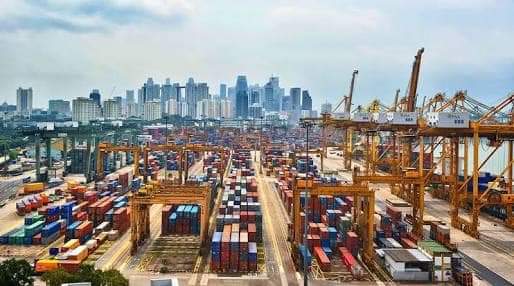|
Getting your Trinity Audio player ready…
|
More than 90% of the goods traded internationally are shipped by sea, according to the Organisation for Economic Co-operation and Development, with maritime trade volumes set to triple by 2050. About 60% of those goods – everything from appliances to imported fruit – are packed in containers, while commodities such as oil or grains are stored in the hull.
However, maritime trade routes can be severely impacted by extreme weather, forcing vessels to adjust planned routes to minimise disruption or delays and, in the worst-case scenario, cause loss of cargo or damage to the ship itself.
In 2020 alone, some 3,000 containers are said to have been lost overboard, and Bloomberg estimated that 1,000 had already been lost to the sea within the first four months of 2021. Meanwhile, bad weather accounted for one in five ship losses in 2019, according to Allianz.
More intense storms due to climate change
“Climate change has led to more frequent extreme weather events, threatening livelihoods, particularly in vulnerable communities. The maritime sector needs to be aware of increased risks to shipping and ports from more intense storms,” said Natasha Brown, acting head, public information services, at the International Maritime Organization (IMO).
It is a problem that many expect to get worse, as warmer ocean temperatures and higher sea levels caused by climate change increase the intensity and impacts of hurricanes and tropical storms. Indeed, the proportion of Category 3 to 5 cyclones has grown by about five percent per decade since 1979, according to an estimate by the High Meadows Environmental Institute.
‘’The maritime sector needs to be aware of increased risks to shipping and ports from more intense storms.’’
Natasha Brown
Disruptions due to extreme weather can cause a range of issues, including missed port calls and delayed estimated time of arrivals, meaning you have to change schedules for the discharging and loading up of cargos, among other issues,” explains Edwin Magesh, a former engineer in the merchant navy and now general manager, expertise services at Wärtsilä Energy.
Lost cargo also has obvious and significant financial ramifications. Additionally, a worldwide surge in e-commerce triggered by the COVID-19 pandemic has led to ships being stacked higher with containers and increased the pressure on shipping companies to deliver goods as quickly as possible. Bloomberg analysis estimated that total financial losses due to containers falling overboard in the first four months of 2021 alone were USD 54.5 million.
‘Bomb cyclone’ hits cargo ship MV Zim Kingston
The past two years have seen several shipping incidents in which containers were washed overboard, with one of the most notable being the MV Zim Kingston. In October 2021, 109 containers were swept overboard after the ship heeled 35 degrees in heavy swells off Vancouver Island, Canada. The bad weather is thought to have happened due to a rare ‘bomb cyclone’ off the British Columbia coastline.
The ship then faced a fire on deck, which damaged more containers. Only four of those which were washed overboard were recovered and more than 27,000 kg of debris was collected from surrounding beaches. The ship had been carrying everything from hazardous chemicals to Christmas decorations, poker tables, car parts, and stand-up paddleboards.
Extreme weather can also cause significant disruption at seaports, which are vulnerable to flooding, waves, and winds due to their geographical position.
Storm surges and ‘flood’ tides can impact the loading and discharge of cargo due to flooding and higher water levels. This can, in turn, delay or lengthen overall journey times and increase bunker consumption – piling further pressure on the maritime sector.
To help mitigate the impact of climate change on maritime trade routes, the UN Conference on Trade and Development (UNCTAD) has called for an ‘all hands on deck’ response to enhance the climate resilience of seaports and other critical transport infrastructure to advance the UN’s 2030 Agenda for Sustainable Development.
Optimised ship design
Shipping companies can also take measures to help mitigate the impact of extreme weather. Maersk, for example, has optimised its ship design and strengthened weather monitoring systems to improve safety and energy efficiency.
“Weather has always played a significant role in shipping, including the risk of extreme weather, and over the years we have optimised ship designs ensuring a continuous safe and compliant stowage of our vessels,” says Aslak Ross, head of marine standards at Maersk.
“Further, in the past year we’ve taken several measures to strengthen our processes and minimise the risk of losing containers when encountering rough weather,” adds Ross, whose role also covers safety at sea.
‘’Weather has always played a significant role in shipping, including the risk of extreme weather.’’
Aslak Ross, head of marine standards at Maersk
“We have, for instance, strengthened the monitoring from our voyage centre, lowered the threshold when seeking additional weather routing advice, and taken an ever further conservation approach to balancing energy efficiency and navigational safety. As safety is a never-ending journey, we are committed to continuous improvements.”
Brown says that there needs to be continuous efforts to improve the accuracy and timeliness of weather forecasting and transmission to ship, taking advantage of new developments in technology.
Source: Hellen Shipping News
